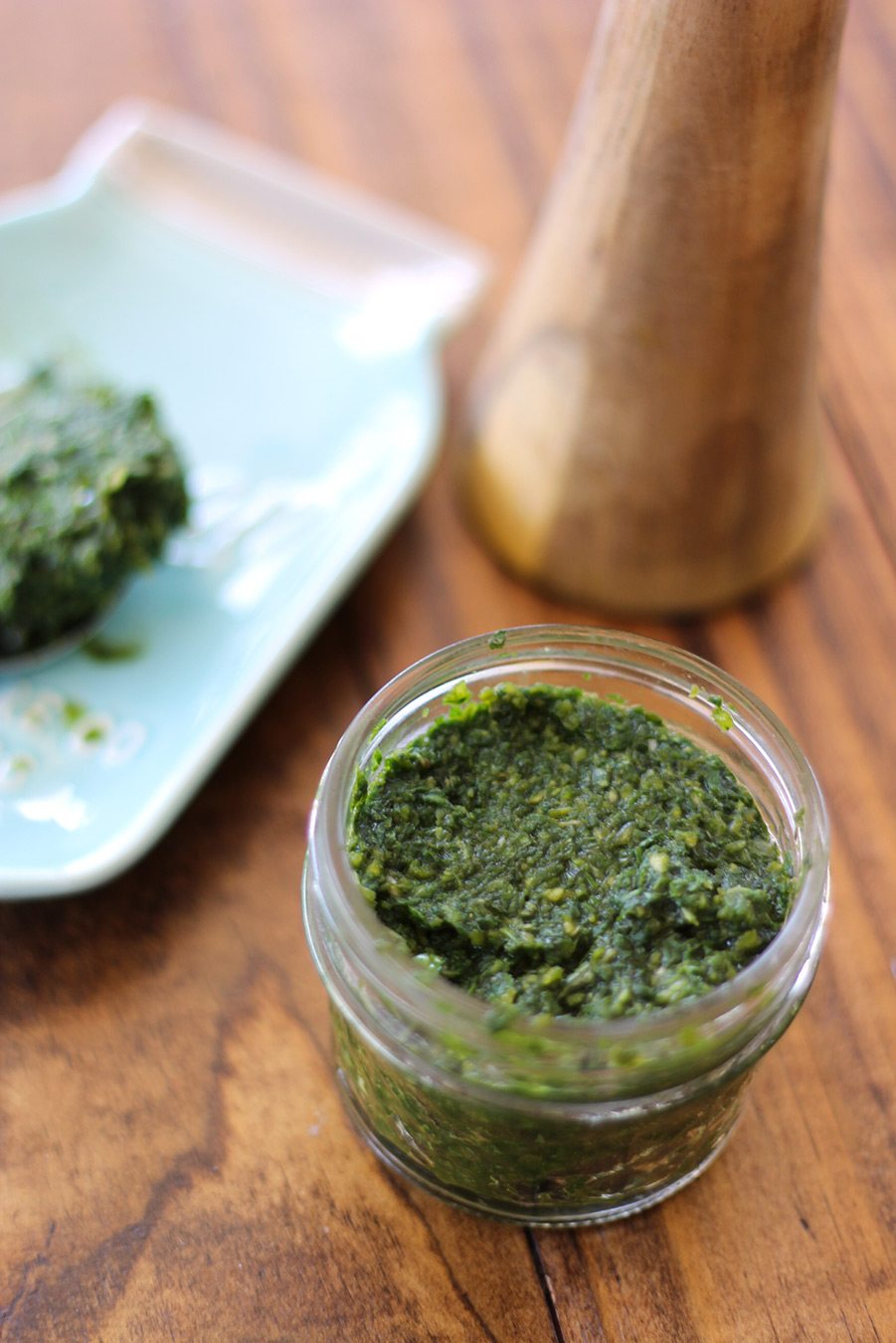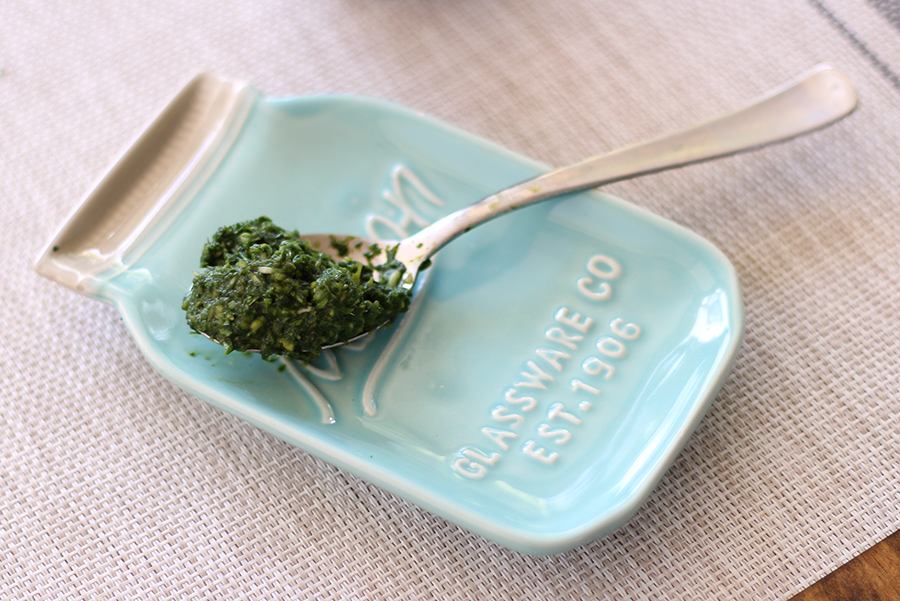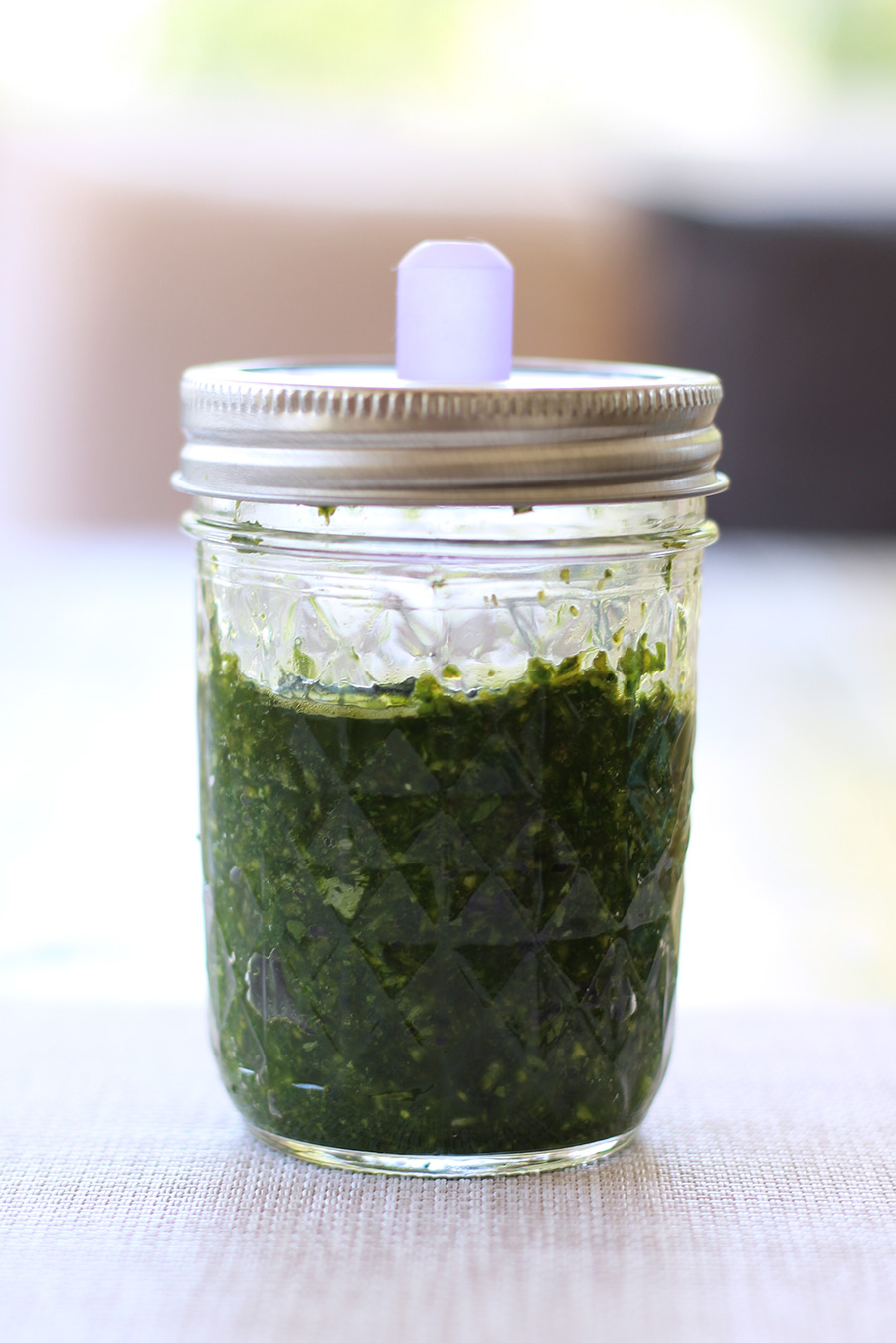
Bursting with sweet, herby, garlic flavor, this Fermented Basil and Garlic Paste recipe is the perfect base for dressings and sauces.
One of the best ways to preserve herbs and spices is making them into a fermented paste. It saves time and it’s super convenient. Instead of mincing garlic and basil when I need it for a recipe, I can pop open the fridge, grab the fermented paste and scoop it out. I have several different pastes ready to go for flavoring.

Pastes are trickier to make than other ferments, because they
- Have very little brine.
- Need to be carefully packed and weighted so they’re not exposed to air. The best way to do this is with a fermentation weight or a ziploc baggie filled with water.
- Ferment longer than other ferments. It takes longer for them to develop acidity.

Besides being a little tricky, pastes are easy to make, because all you have to do is throw all the ingredients into a food processor and blend it into a paste, pack it tightly and wait for the magic to happen.
Waiting for it to ferment is the hardest part, I promise.
- 4 cups of fresh basil (about 2-3 large bunches)
- 3 cloves of garlic
- ½ teaspoon of sea salt
- Put the basil, garlic and salt into a food processor and blend into a paste.
- Taste to see if you have enough salt. It should taste on the salty side, because pastes are meant to be used as flavor enhancers. Similar to a bouillon.
- Add the paste to a small mason jar and leave about 1 inch of space from the top.
- Press it down with a spoon or tamper. You should see the brine come up and over the paste when pressed. The brine may go down after pressing, but it's still fine. This is enough brine to ferment in.
- Add a fermentation weight to reduce exposure to air and prevent mold.
- Set on the counter out of direct sunlight for 14-21 days.
- Check every few days to make sure the paste is under the brine or press it back down.
- After 14 days, taste the paste for acidity. It's ready when it it tastes slightly pickled and is dull green.
- When ready, store in the refrigerator. Paste will last for up to 1 year.
This paste can be used as a pesto base. When it’s done fermenting add olive oil, parmesan cheese and ground pine nuts for pesto.